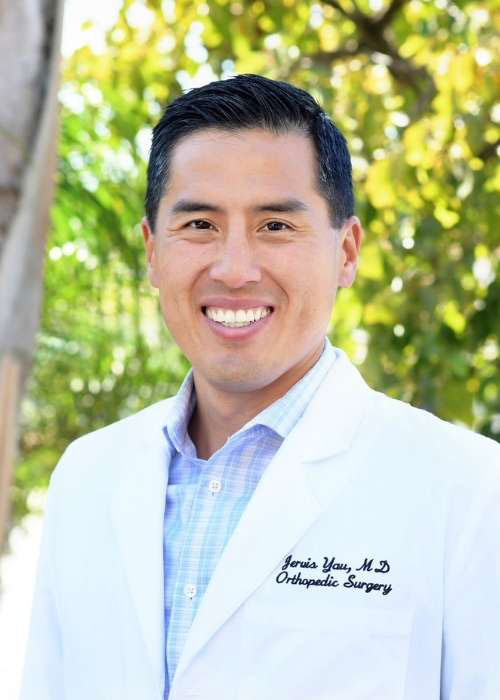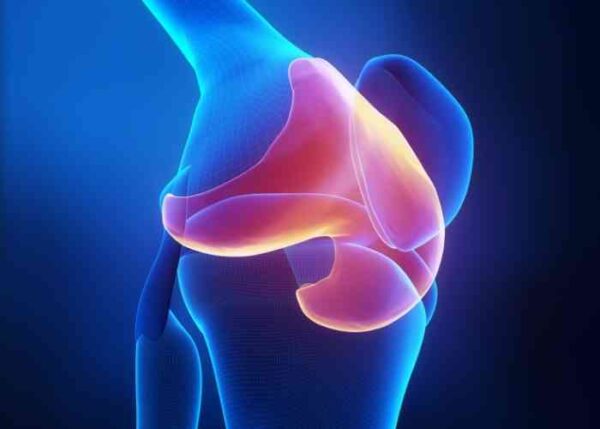Joint Preservation & Cartilage Restoration Surgeon

Are you experiencing pain in your knee due to osteoarthritis? If you are trying to delay a knee replacement, there are a number of joint preservation surgeries to help alleviate knee pain and delay a knee replacement. Knee joint preservation specialist, Dr. Jervis Yau provides diagnosis and both surgical and nonsurgical treatment options for patients in Santa Barbara who have developed knee osteoarthritis. Contact Dr. Yau’s team today!
What is Joint Preservation and Cartilage Restoration?
Many patients in the Santa Barbara, Goleta, Santa Maria and Ventura, California communities will experience knee osteoarthritis during their lives. This common condition causes knee pain, stiffness and swelling which may limit a patient’s ability to perform routine activities. The troublesome symptoms associated with knee arthritis are caused by the gradual degeneration of articular cartilage from normal wear and tear through aging, traumatic injury or past surgery. Articular cartilage lacks the ability to heal on its own, so Dr. Jervis Yau, board certified knee surgeon, may prescribe a joint preservation and cartilage restoration procedure in patients affected by focal knee osteoarthritis. These procedures are effective at restoring cartilage integrity and delaying the need for total knee replacement surgery.
Is Joint Preservation an Alternative to Knee Replacement?
Joint preservation and cartilage restoration surgeries have gained popularity over the years as a knee replacement alternative. These procedures are most effective in younger patients with localized cartilage damage or those who are not good candidates for a total knee replacement. It is important to note that cartilage restoration procedures are not commonly performed in patients over the age of 60 years or those with moderate to advance stages of osteoarthritis.
The correct surgical procedure depends on the severity of articular cartilage injury, defect size and location, associated knee injuries, age and activity level.
Dr. Yau performs several joint preservation and cartilage restoration procedures:
- Chondroplasty – This arthroscopic procedure requires Dr. Yau to trim away the damaged areas of loose articular cartilage and/or bone spurs in order to create a smooth surface to alleviate pain. Chondroplasty is commonly reserved for patients who do not have full thickness cartilage defects (down to the bone).
- Microfracture – Patients with a full thickness defect and healthy subchondral bone may be candidates for microfracture. This procedure requires Dr. Yau to drill tiny holes in the defect’s bony surface, stimulating the bone marrow and stem cells to fill the defect with new fibrocartilage .
- Osteochondral autograft/allograft transfer (OATs) – This procedure requires Dr. Yau to harvest small plugs of healthy bone and cartilage from an unused area of the patient’s knee (autograft) or a donor (allograft). This healthy osteochondral plug is then transferred into the focal defect.
- Autologous Chondrocyte Implantation (ACI) – This is a two-step procedure where articular cartilage is biopsied from the patient’s knee during the initial arthroscopy and sent to a lab where the chondrocytes (cartilage cells) are processed and grown. When ready, the cells are then re-implanted into the cartilage defect under a special patch to facilitate healing.
- De Novo Juvenile cartilage – Juvenile donor cartilage is processed and sterilized and can be transplanted into a cartilage defect in a one stage procedure. Juvenile cartilage has 10x the density of chondrocytes than adult cartilage and does not elicit an immune response.

Recovery and Rehabilitation Following Joint Preservation and Cartilage Restoration
Dr. Yau will prescribe an appropriate rehabilitation program based on the patient’s joint preservation and cartilage restoration procedure. Patients who receive chondroplasty alone are usually on crutches for only a few days for comfort and then progressed to weight bear as tolerated when their pain allows. Patients who have one of the other cartilage restoration procedures are commonly placed in a brace with limited weight bearing for approximately 6 weeks to allow the repaired cartilage to heal. Range of motion exercises will begin immediately with the assistance of physical therapy and occasionally a continuous passive motion (CPM) machine to prevent stiffness.
If you would like additional information on joint preservation and cartilage restoration procedures, please contact the orthopedic practice of Dr. Jervis Yau, knee surgeon located in the Santa Barbara, Goleta, Santa Maria and Ventura, California area.